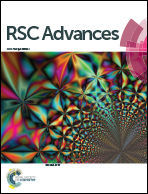Electron induced chemistry of thioformaldehyde
Abstract
A comprehensive theoretical study was carried out for electron interactions with thioformaldehyde (H2CS) over a wide range of impact energies (0.01 eV to 5000 eV). Owing to a wide energy range we have been able to compute target properties and investigate a variety of processes and report data on resonances, vertical electronic excitation energies, differential cross sections (DCS), momentum transfer cross sections (MTCS), total ionization cross sections (TICS) and total cross sections (TCS) as well as scattering rate coefficients. Due to the complexity involved in scattering calculations, two different theoretical formalisms are used. We have employed ab initio R-matrix method (0.01 eV to ∼20 eV) and the spherical complex optical potential (SCOP) method (∼20 eV to 5000 eV) to compute the cross sections. The R-matrix calculations were performed using close coupling approximation employing a static exchange plus polarization (SEP) model with the aid of basis sets, 6-31G* (14 target states) and cc-pVTZ (16 target states). The target properties reported using quantum chemistry codes are in good agreement with earlier reported data. The scattering rate coefficients, total ionization cross sections, DCS, MTCS and TCS data (beyond 10 eV) are our preliminary efforts. Furthermore, no experimental data is available for all TCS to the best of our knowledge. We have compared all our results with the available data wherever possible in the literature and found good overall agreement. Due to the scarcity of TCS data for thioformaldehyde, we have made comparisons with other aldehydes such as formaldehyde and acetaldehyde and drawn fruitful conclusions.



 Please wait while we load your content...
Please wait while we load your content...